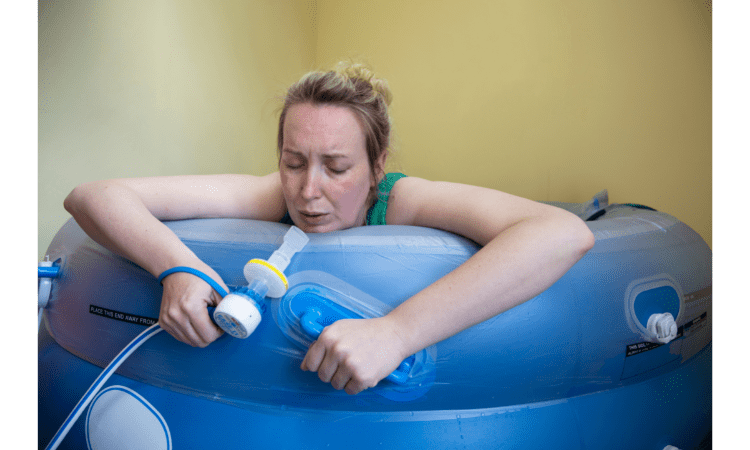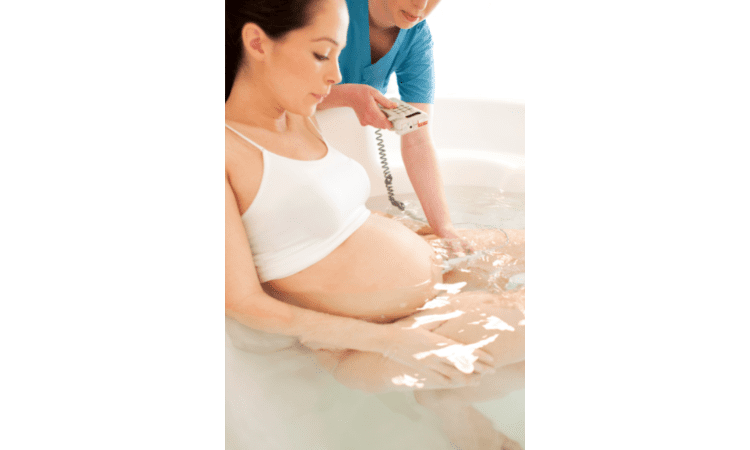
Water births are becoming increasingly popular, but there are still many parents who aren’t aware of the benefits they offer. Water births can be a great choice for many mothers-to-be, and if you’re considering this option, we hope you’ll find this information helpful.
In this article, we’ll discuss everything parents need to know about water births: how they work, what the benefits are, and how to find a practitioner who can provide them in your area.
Water Births

Water birth is a way to give birth in which you are submerged in warm water. Water birth can be done in a tub or pool. It is an alternative to a traditional hospital birth that is gaining popularity. It’s also known as “pool birth” or “water immersion therapy.” It’s often used in hospitals and birthing centers as an alternative to traditional delivery. The idea behind it is that it helps you relax and feel more comfortable during labor, and it can also help with pain management.
The experience of giving birth in water is very different from giving birth out of water because it changes how the body moves and feels during contractions. In fact, some women find that they can use this technique to avoid medication or even an epidural altogether.
While there isn’t much research on the effects of water births, they do seem to be safe if done correctly. However, if you’re thinking about having a water birth at home or at a birthing center, make sure that your doctor is aware of your plans so he or she can give you advice about how best to proceed.
Is the water birth process safe?

Water birth is the process of giving birth in water. It is a safe, comfortable, and natural way to deliver your baby. This type of birth takes place in a tub of warm water, which will be filled with about 2 inches of water. The mother-to-be is fully immersed in the water and she may sit on a stool or recline in a special birthing pool.
It’s important to note that while it’s possible to give birth completely submerged in water, most women choose to keep their heads above the surface during labor so they can breathe easily as they push their baby out into this world. Many people believe that water births are safer for both mother and baby because it allows them to relax during labor, which can help reduce pain and stress.
Process of Water Births

Water births are a great way to bring your baby into the world. They are safe, and comfortable and can be done in any large tub—whether it’s at home or in the hospital.
The process is simple: after labor begins, a woman is placed in a tub of warm water that has been filled with jasmine or lavender oil and allowed to give birth in the tub. This process can be done at home or in a birthing center.
The reason for using water during labor is to provide comfort for both mother and baby. The warm water helps relieve pain and also increases circulation, which means less blood loss for the mom and a faster healing time for the baby. Additionally, research has shown that babies who are born underwater have lower heart rates than those who were not, which indicates an easier transition into life outside the womb.
Need To Know About Water Births

If you’re considering having a water birth, here’s what you need to know:
1) Water births are not recommended for women who have had previous Cesarean sections or other complications like heart conditions or high blood pressure. If you do have any of these issues, talk with your doctor before making a decision about how to give birth.
2) You’ll want to make sure that whoever is helping deliver your baby has training in how to handle this situation. Even if you’re giving birth at home, there may be people who come into contact with your child that isn’t familiar with handling babies who are born underwater.
3) Make sure that whatever tub you choose has been evaluated for safety by an independent organization like the U.S. Consumer Product Safety Commission (CPSC).
4) If you’re planning on having a water birth at home or at an alternative birthing center, make sure there’s an emergency plan in place just in case something goes wrong while delivering your baby underwater (like an umbilical cord prolapse).
Benefits of water birth

There are many benefits to being in water during your labor and having your baby born in water. Water birth is a wonderful way to bring your baby into the world. It’s all about bonding and relaxation, and the benefits of this kind of birth are many.
The buoyancy provided by the warm water helps relieve pain during contractions (as well as afterward).
There’s less pressure on your perineum (the area between your vagina and anus), which makes it easier to push out your baby.
Water can help reduce swelling in your legs and ankles after delivery (which can happen after an epidural).
More mobility—the buoyancy of the water helps reduce back pain and allows the mother to move more freely.
Water births can help prevent postpartum hemorrhage. By helping the uterus return to its normal size after delivery, water births decrease the risk of excessive bleeding after birth by around 40%.
Reduced risk of infection—there is less chance of bacteria entering the birth canal when it’s submerged in water, so there is less chance of infection from that source.
Less need for stitches—since there is no laceration or tear in most births, there is no need for stitches.
The temperature of the water helps keep the baby’s heart rate at a normal level, which reduces stress on both mother and baby during labor.
It also helps with blood flow and oxygenation, which means that you can stay in labor longer without feeling fatigued or exhausted.
More comfort for baby—water helps keep baby’s temperature steady and helps them develop their lungs better.
Disadvantages of water birth

Water births can be a wonderful experience for moms and babies, but there are some drawbacks.
Water birth is not for everyone. It’s recommended that you have a healthy pregnancy and no complications before choosing to have your baby in the water. If you’re unsure about whether water birth is right for you, consult with your doctor or midwife before making any decisions.
Some people prefer water birth because it allows them to be more mobile during labor and delivery, but there are some disadvantages to this type of delivery as well.
- The baby might not be able to breathe on their own. When babies are born underwater, they don’t have the same reflexes that they would if they were born in the air. This means that they may struggle more when it comes time for them to take their first breath, and this can make it harder for them to get enough oxygen into their lungs.
- Water births can delay the process of labor. Since water is much denser than air, it takes longer for a woman’s cervix to dilate when she’s in water—this means that she will have longer labor than normal and will be at greater risk for complications like an infection or hemorrhage due to prolonged contractions.
- There is a risk of drowning (or near-drowning) during a water birth if something goes wrong with the delivery or if an emergency arises mid-birth (like umbilical cord prolapse or shoulder dystocia). This is especially true if your baby weighs more than 8 pounds at birth (which is common).
- Water births take longer compared to land births. This is because the baby’s head needs to be in the water long enough so that it can dilate and mold itself around your pelvis as it emerges. This can take up to an hour—much longer than a traditional delivery where the mother does not participate in labor.
- There are risks associated with water birth for both mother and child. For example, if the umbilical cord becomes wrapped around the baby’s neck or if it gets caught between the baby’s face and your pubic bone, then both mother and child could be at risk for drowning.
- If you have a condition like asthma or allergies, you should avoid using warm water for birthing because it might trigger asthma symptoms or allergies.
Finally, some health experts warn that babies born in water may be at higher risk for developing ear infections later on in life because of exposure to bacteria while in utero.
Conclusion
Water births are a great option for moms who want to have a natural birth. However, it can be difficult to find the right facility with an open-water birthing tub and trained staff. We hope this article has given you some information on how to choose the right place for your water birth, as well as some tips on how to prepare for the big day. Water births are a safe and healthy option for many women. The key to success is finding a provider who is comfortable with the practice. If you have questions about water birth, ask your doctor or midwife about the safety of the procedure.











